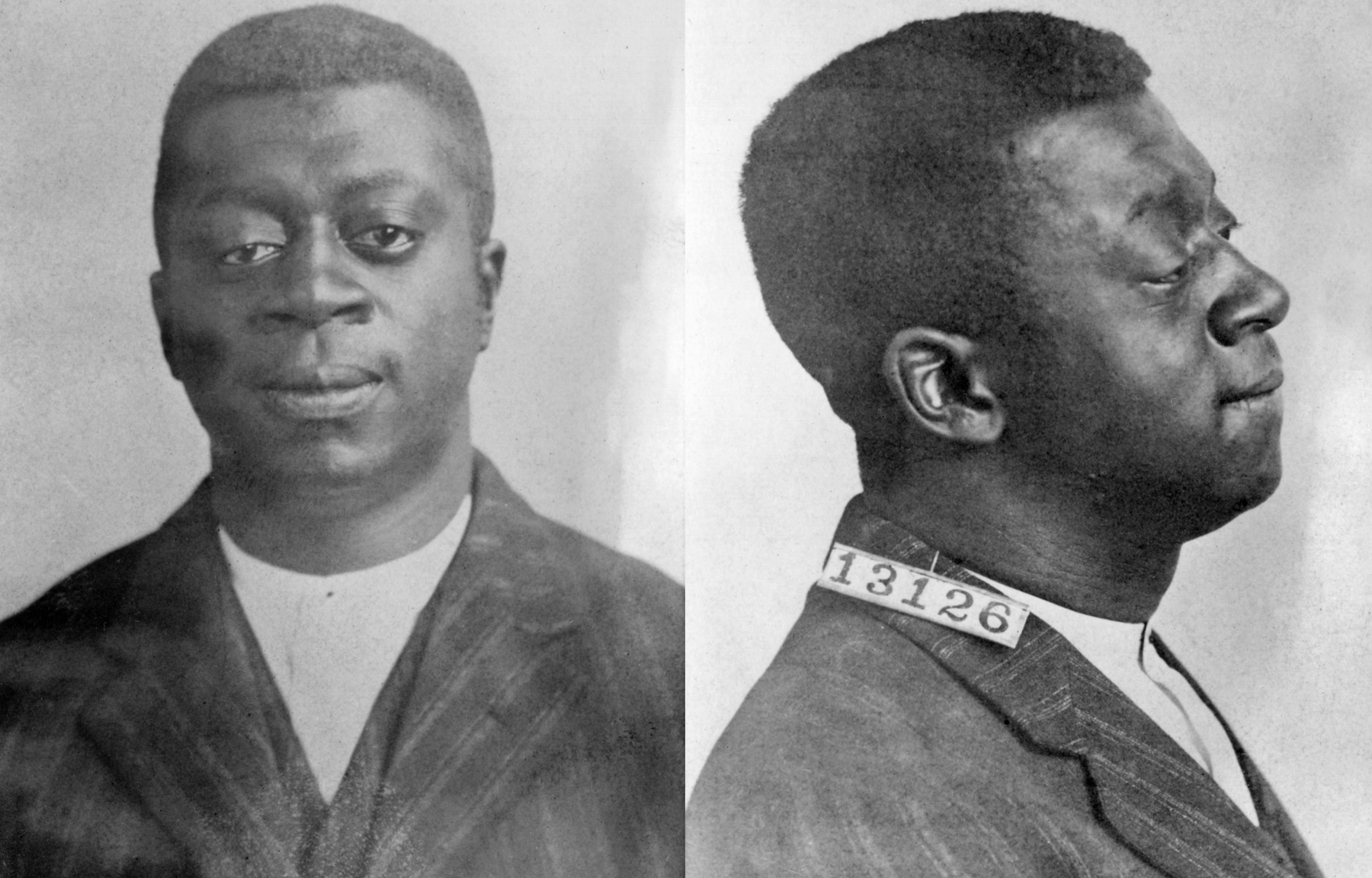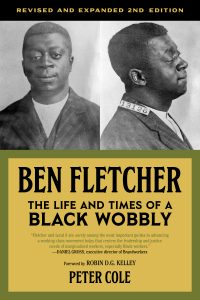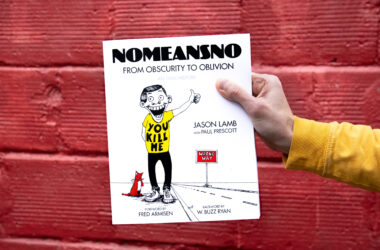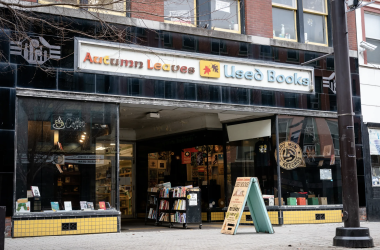By Robin D.G. Kelley
Dissent Magazine
October 29th, 2020
Ben Fletcher, once one of the most important black labor figures in the United States, has faded into obscurity. But he couldn’t be more relevant to the most urgent political projects of the present.Robin D.G. Kelley
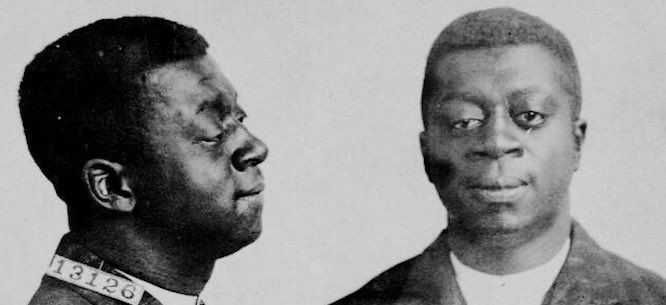
Re-reading Peter Cole’s marvelous Ben Fletcher: The Life and Times of a Black Wobbly amidst a global pandemic has been something of a revelation. The book makes a case for Fletcher’s relevance to the most urgent political projects of the present, and reminds us of his important role in history. This spring, sheltered at home, I streamed Reds—Warren Beatty’s three-hour masterwork about the Russian Revolution as told through the romance of American journalists John Reed and Louise Bryant. The movie reminded me how acutely Fletcher has been missing from accounts of the past.
I hadn’t seen Reds since its theatrical release in the early 1980s. A college student and die-hard Marxist who spent the previous summer reading the first two volumes of Capital and all three volumes of Lenin: Selected Works, I vividly recall tearing up as Reed and Bryant joined throngs of workers marching down the streets of Petrograd toward the Winter Palace, singing the “Internationale” in Russian.
Seeing it again after all these years, I suddenly remembered that I had also found the film unsettling because of its whitewashing of the left. Here was a considerable slice of American-Communist history without Negroes or a “Negro Question.” One would never know from the film that John Reed was the first American to address the Communist International on “The Negro Question in America.” Delivered on July 25, 1920, just three months before his untimely death, his speech excoriated U.S. racism, condemned lynching and disfranchisement, and heralded a new revolutionary movement among black workers and intellectuals such as A. Philip Randolph and Chandler Owen, editors of the socialist-leaning Messenger magazine. And yet, while urging Communists to support black struggles for social and political equality, Reed argued that their main task should be “to organize Negroes in the same unions as the whites. This is the best and quickest way to root out racial prejudice and awaken class solidarity.” The Industrial Workers of the World, he insisted, had been doing this all along.
In fact, Benjamin Harrison Fletcher should have shown up in Reds, and not just in cameo. Reed first met Fletcher in 1910 and, like everyone in the IWW’s circle, came to regard him as one of the most talented organizers the Wobblies ever produced. Even those hostile to the Wobblies acknowledged Fletcher’s venerated status. The Messenger dubbed him “The most prominent Negro Labor Leader in America.” A target of the First World War’s Red Scare, Fletcher also became one of the most prominent black political prisoners in the country. He was the only African American among the 101 Wobblies convicted of violating the 1917 Espionage Act, for which he served nearly three years in Leavenworth. Even after his death in 1949, long past the Wobblies’ heyday, Fletcher remained widely respected. The fairly conservative black-owned newspaper the Atlanta Daily World ran a glowing obituary calling Fletcher “One of the most brilliant Negroes ever associated with a leftist organization” and “highly respected for his scholastic ability and his oratorical efforts.” That author’s point, that Fletcher was jailed because “mass hysteria swept the country and new laws, criminal syndicalism made its appearance . . . as a weapon to prosecute supposed subversives,” was not lost on readers living through a second, more virulent Red Scare.
By the time Reds hit the big screen, Fletcher had faded into obscurity, and it was precisely the whiteness of Reds that led me to Philip S. Foner’s American Socialism and Black Americans, where I first encountered Fletcher. I found traces of him in Sterling Spero and Abram Harris’s classic 1931 text The Black Worker, in Robert Allen’s Reluctant Reformers, in Melvyn Dubofsky’s massive history of the IWW, We Shall Be All, and in a smattering of obscure journals. But these sources did not capture his complicated experiences as an independent black socialist labor leader, the breadth of his intellect and strategic brilliance, and his triumphs and disappointments, not to mention his razor-sharp wit and wicked sense of humor.
That changed in 2006 when a young historian named Peter Cole published the first edition of Ben Fletcher: The Life and Times of a Black Wobbly with Charles H. Kerr, the iconoclastic publishing house then run by Franklin and Penelope Rosemont. It was soon followed by Cole’s magnificent monograph, Wobblies on the Waterfront: Interracial Unionism in Progressive-Era Philadelphia, which placed Fletcher squarely at the center of (dock)worker organizing in the early twentieth century. That meant reckoning with the dynamics of race and class, not to mention the potentialities and limits of direct-action vs. bread-and-butter unionism in an interracial but predominantly black labor union. Fleshing out Fletcher, as Cole did, unsettled not only U.S. labor history but also histories of American radicalism and Black Studies. We learn that Fletcher was more than a “Black Wobbly.” He exemplified the “New Negro” of the post–First World War era, though he was never included among its celebrated intellectuals, artists, and activists. Cole’s scrupulous introduction to Ben Fletcher, which is followed by collected writings by and about Fletcher, reveal his radical vision. Fletcher rejected both emigration and inclusion within the existing system in favor of a revolution that would transform all social, cultural, political, economic, and juridical institutions to the core. Fletcher understood that only workers’ power could usher in a new society—and that required obliterating the color line, building a durable solidarity, and attending to working people’s immediate needs. As a consequence, Fletcher was frequently deemed too radical by some and too conservative by others, evidence of a praxis that exceeded the terms of syndicalism, socialism, anarchism, and industrial unionism. Rather, Fletcher might be best described as a radical pragmatist in that he paid attention to context, emphasized solidarity, and approached the work in an improvisatory and flexible manner, all without ever losing sight of the long-term goal: the emancipation of the working class from capital.
Fletcher had no choice. His survival depended on a keen wit and a fugitive’s acumen. He knew that, as a black organizer of an interracial movement, he was especially susceptible to lethal violence. Company thugs, mobs, and cops wouldn’t stop at roughing him up a bit. As white men savagely murdered hundreds of African Americans with impunity, Fletcher was locked up for promoting industrial unionism, interracial solidarity, socialism, and an end to war. In a 1931 interview with the New York Amsterdam News, Fletcher recalled narrowly escaping a possible lynching in Norfolk in 1917. “One night, friends, fearing that my life was in danger, smuggled me aboard a northbound ship to Boston.” Upon arrival, he found work in a soap factory and continued agitating. When a cop spotted him distributing Wobbly literature, he was taken into custody and interrogated by an FBI agent. Upon questioning, Fletcher cunningly pretended to disavow his membership, convincing the agent that he “discovered the folly of this as he has been unable to secure or keep any kind of job since his connection as organizer of the IWW.”
As Cole points out, Fletcher was a funny man. His capacity to find humor in the direst of circumstances caught the attention of those who knew him, including IWW leader William “Big Bill” Haywood. Much of his humor turned on the absurdity of racism, which not only made him vulnerable to lethal violence, but also rendered him invisible. When he learned about the federal indictment against him, Fletcher promptly left Boston and returned to Philadelphia to await his arrest. He took a job at a Pennsylvania Railroad roundhouse, never concealing his identity. Five months passed before agents tracked him down and arrested him. While out on bail, he received a summons to appear in court in Chicago. Delayed by a train accident, Fletcher arrived at the courthouse a few hours late. As he later recalled, “Making my way through the Federal agents and police who swarmed the corridors I was blocked at the courtroom door by the chief bailiff, who inquired:
“What do you want in here?”
“I belong in here.”
“Oh, a wise boy from the South Side want to see the show?”
“No, I’m one of the actors.”
“Take that stuff away. You can’t get in here.”
He had to produce identification just to prove he was the one and only Benjamin Harrison Fletcher. It was enough to finally persuade the chief bailiff to let him enter. “And then I walked into the courtroom and into the Federal penitentiary.”
By the time he left prison and returned to organizing, Fletcher encountered two big challenges. The first was an old problem: white workers whose loyalty to white supremacy undermined interracial solidarity and class struggle. While his enthusiasm for “One Big Union” never waned, he complained in the Messenger, “Organized labor, for the most part be it radical or conservative, thinks and acts, in the terms of the White Race.” Of course, the Wobblies never paid special attention to the specific situation of African Americans. The IWW sought, too simply, to rise above the racism and ethnocentrism of the working class and its capitalist masters. To solve the class question, they argued, was to solve the race question—a position Fletcher endorsed.
The second challenge was the Communist Party, to which he became bitterly opposed. But not right away. He was willing to work with Communists, and in 1925, he was recruited as a principal speaker at the first American Negro Labor Congress organized by the CPUSA. According to lore, he was slated to lead the ANLC if not for his former Wobbly comrade Lovett Fort-Whiteman. Credited as the first black person to officially join the Communist Party, Fort-Whiteman jealously opposed Fletcher holding a leadership role in the Congress. Fletcher also complained that Communists were attempting to take over the IWW and the unions they had built. As the CPUSA’s star rose in the 1930s, Fletcher clung to the rapidly declining IWW, even after it became a shadow of its former self. Neither anticommunism nor organizational loyalty kept him tethered to Wobblies. Rather, he held on to the idea of industrial unionism. He predicted in 1931, “Inevitably, the IWW will be revived . . . with the full exposure of the insincerity of the American Communists and the continued rationalization of industry which obliviates craft lines, making the trade unions of the A.F. of L. obsolete and necessitating the building of industrial unions such as those of the Industrial Workers of the World.” He was partly right. While the IWW never achieved the status it enjoyed during the first two decades of the twentieth century, a few years after Fletcher’s prediction, the Congress of Industrial Organizations was formed.
Ben Fletcher believed in the working class and its capacity to win. He never wavered from his belief that capitalism would end and that it was only an organized working class that could end it—a truly organized working class that would have to eliminate all vestiges of racism and xenophobia to redirect our collective anger toward the capitalist class. His was not a blind optimism, or a naïve belief that persuasive arguments could wipe away color prejudice and unite the proletariat. Rather, he knew that our survival depends on the overthrow of capitalism—and he had lived through an era when it appeared that the working class had capital by the throat. The state’s decision to imprison him, along with one hundred of his fellow Wobblies, was evidence of a terrified ruling class.
That meant working people had to be ready to take power. He said as much in a letter penned from his cell in Leavenworth to Milwaukee socialist Othelia Hampel. Written on New Year’s Eve 1919, at the close of arguably the most revolutionary year in U.S. and world history, he declared, “We are living in momentous times. . . . None of us are gifted with the power [of] ‘clairvoyancy’ as to be able to foretell the day or the hour, therefore the first and most important duty is for all of us to prepare ourselves for the final chapter in the life of Capitalism.”
Robin D. G. Kelley, Gary B. Nash Professor of American History at UCLA, is author of Africa Speaks, America Answers: Modern Jazz in Revolutionary Times and Freedom Dreams: The Black Radical Imagination.
This text was adapted from Robin D. G. Kelley’s introduction to the upcoming new edition of Ben Fletcher: The Life and Times of a Black Wobbly, out this December from PM Press.
Peter Cole is a professor of history at Western Illinois University in Macomb and a research associate in the Society, Work and Development Institute at the University of the Witwatersrand in Johannesburg, South Africa. Cole is the author of the award-winning Dockworker Power: Race and Activism in Durban and the San Francisco Bay Area and Wobblies on the Waterfront: Interracial Unionism in Progressive-Era Philadelphia. He coedited Wobblies of the World: A Global History of the IWW. He is the founder and codirector of the Chicago Race Riot of 1919 Commemoration Project.

